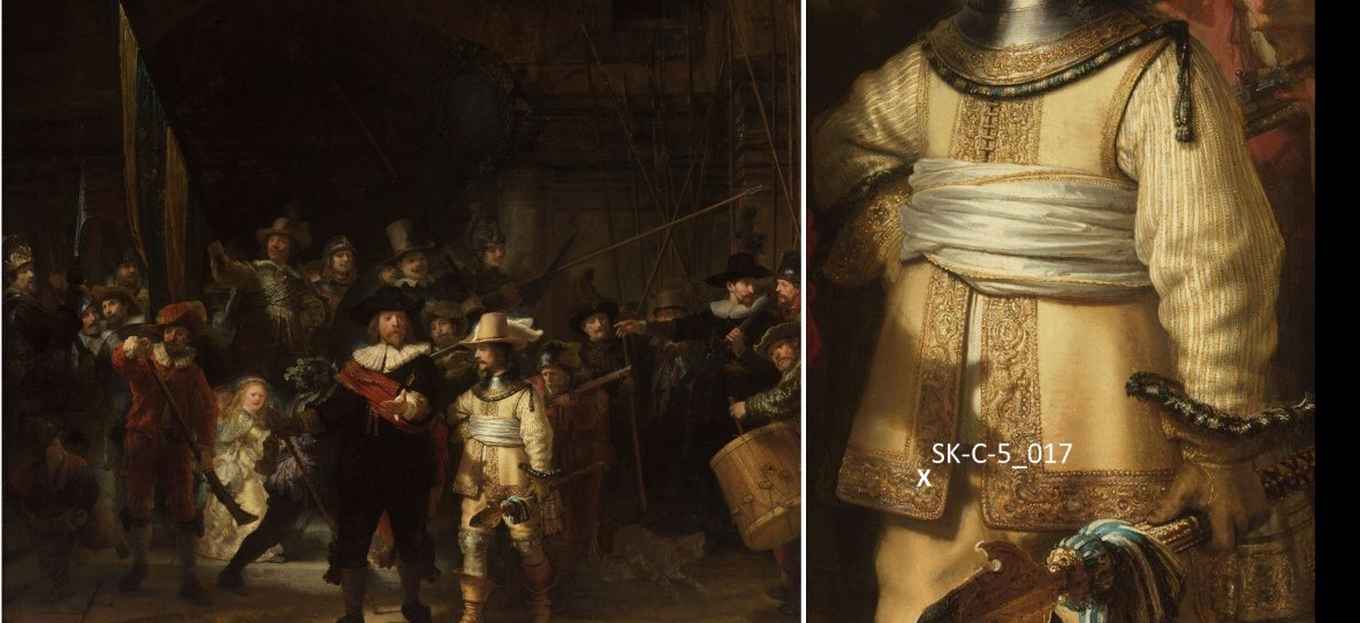How Rembrandt combined Special Pigments for Golden Details of The Night Watch

Chemists at the Rijksmuseum and the University of Amsterdam (UvA) have for the first time established how Rembrandt applied special arsenic sulfide pigments to create a ‘golden’ paint.
The presence of pararealgar in historical paintings is often explained by the ageing of realgar. However, because pararealgar is homogeneously distributed with the semi-amorphous pararealgar, and the paint looks unaltered, the researchers arrive at a different explanation. They argue that Rembrandt deliberately chose to use these pigments in his effort to imitate the golden details of Van Ruytenburch’s clothing. Heating yellow pararealgar pigment results in formation of the reddish semi-amorphous pararealgar. This was then combined with lead–tin yellow and vermilion (red mercury sulfide) pigments to create the golden luster.
This chemical explanation was supported by a comprehensive review of historical sources reporting on the use of arsenic sulfide pigments. It seems that in seventeenth-century Amsterdam a broader range of arsenic pigments were available than previously thought. These probably arrived through known trade routes from Germany/Austria and Venice to Amsterdam. This is further supported by the reported use of a very similar mixture of pigments by Willem Kalf (1619–1693), a contemporary of Rembrandt in Amsterdam. The researchers therefore conclude that Rembrandt intentionally used pararealgar and semi-amorphous pararealgar, together with lead–tin yellow and vermilion, to create the special orange-‘golden’ paint.
Main Image: Rembrandt’s Night Watch (left), the clothing of Lieutenant Willem van Ruytenburch (right) and the location where paint sample SK-C-5_017 was taken. Images courtesy of the Rijksmuseum.
